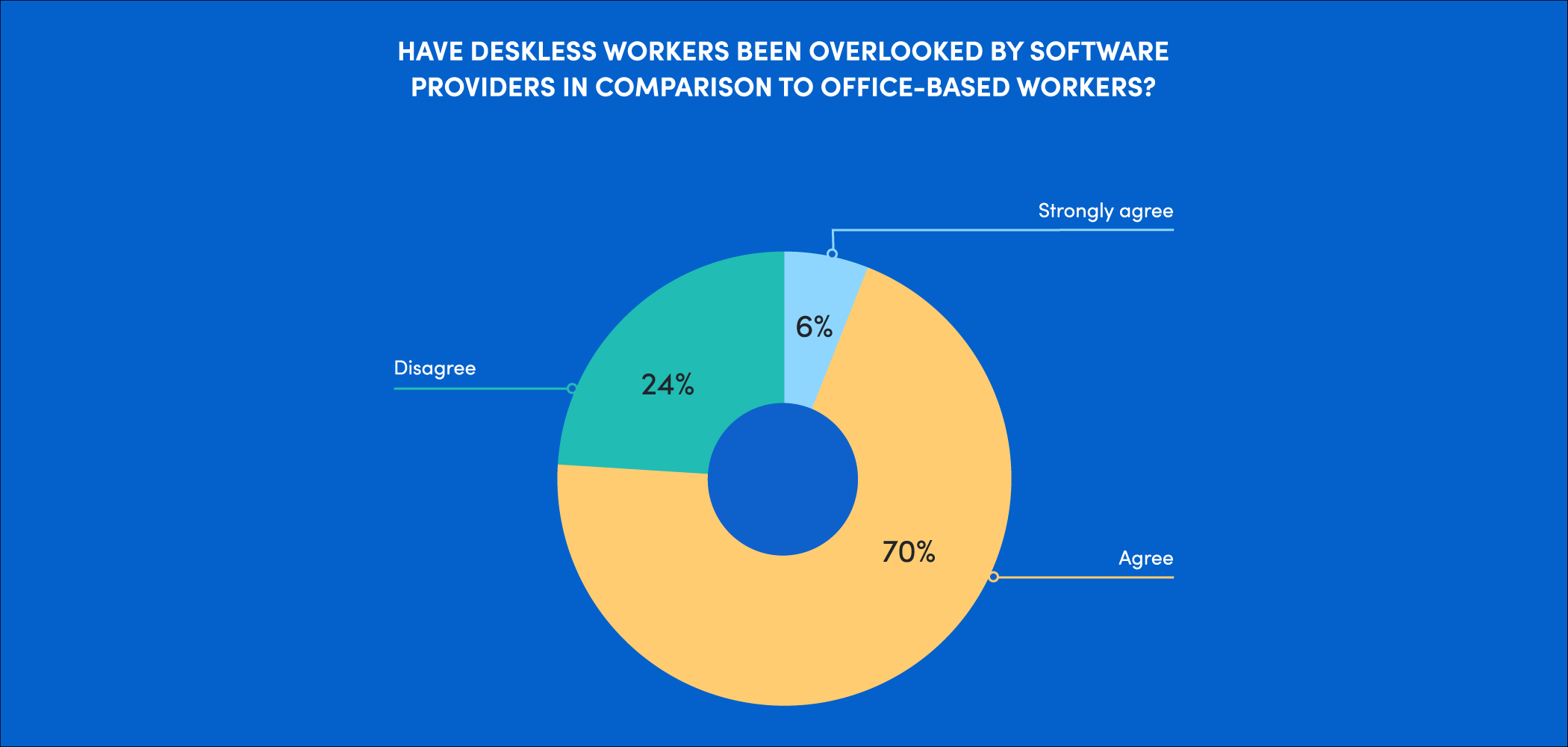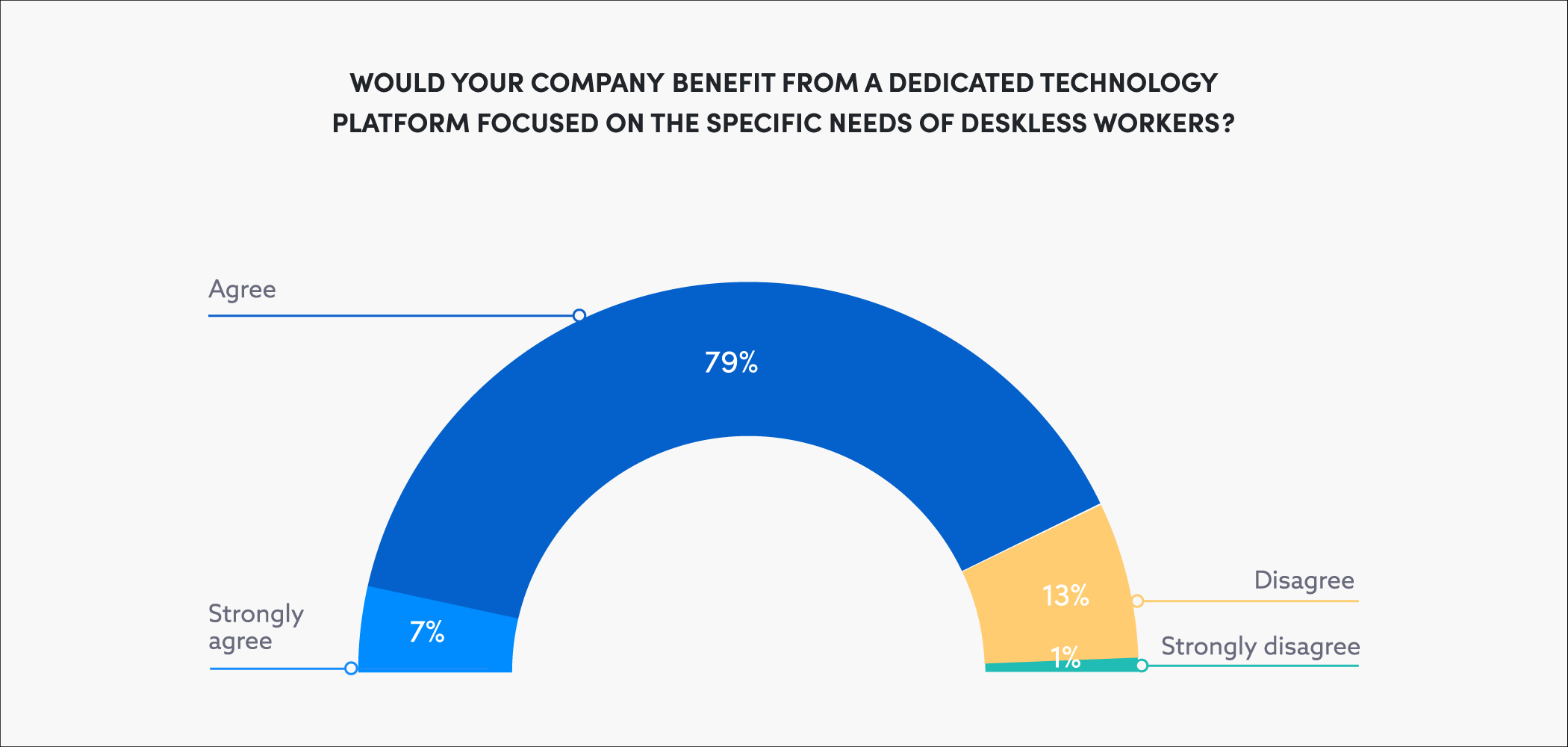CEO’s Perspective: Solving the Software Gap for the Growing Community of Deskless Workers
I’m excited today as we release a research report titled Solving the Software Gap for the Growing Community of Deskless Workers.
Today, the deskless workforce is 2.7 billion strong, outnumbering desk-based workers four to one. This workforce is a diverse group, spanning frontline medical professionals to field service technicians to American Red Cross trainers.
The report highlights how deskless workers, defined as remote and mobile employees who do not work in a traditional office setting, are highly underserved by existing technology providers still focused on desk-based work.
Here are a few of my personal top takeaways that stood out and an opportunity to access the full report for more.
The Deskless Workforce is large — and growing
It is not entirely surprising that 76% of IT executives shared at least 10% of their workforce is deskless.
What does stand out, however, is that this large segment of the workforce is growing – even in the uncertain macroeconomic conditions we face. In fact, this study found that 62% of CIOs anticipate their deskless workforce population to increase over the next 12-24 months, while 34% expected their deskless workforce to remain similar in size. Only 4% predict a decrease.
76% of CIOs agree deskless workers are overlooked
For those of us in the technology industry, the ubiquity of tired terms like “digital transformation” can have a monotonous, numbing effect. But the reality is that the overwhelming majority of software innovation in the last two decades has been aimed at desk-based workers.
In fact, 76% of CIOs agree or strongly agree that software vendors have overlooked deskless workers compared to their desk-based counterparts. In healthcare, where Skedulo has had the fortune to partner with many innovative organizations, that figure jumps to 80%.
Despite the large deskless worker population, only 39% of technology decision makers have provided their deskless employees with a platform designed for deskless work. The rest have been forced to attempt to shoehorn applications that were designed for desk-based workers into their deskless use cases.
Deskless Workers are hindered by conventional tools
What may be more telling is that of the 39% of IT executives that do have software that was purpose-built for their deskless workers, only 13% believe their deskless workers’ needs are met by that platform, while 67% of those studied acknowledge they need to provide additional software to supplement the deficiencies of that platform.
To attempt to address the short-comings of existing solutions, deskless workers and technology decision makers have attempted to cobble together collections of discrete applications to fulfill their wide-ranging and often idiosyncratic or industry-specific needs.
And who suffers? The deskless workers themselves. The behavioral therapist delivering Autism Spectrum Disorder care on the go, or the non-profit organization that is trying to juggle countless moving parts in a complex operation on limited resources.
In fact, 86% of IT leaders agree or strongly agree their deskless workers’ productivity is hindered as a result of the conventionally available tools.
Why organizations invest in deskless productivity technology
It is essential to understand what deskless workers and the technology decision makers working with them prioritize when investing in technology. In asking CIOs to prioritize their objectives for investing in tools to serve their deskless workers, we learned of their stack-ranked priorities:
- Boost deskless worker productivity
- Enhance employee experience
- Improve communication
- Improve reporting and compliance
- Generate cost savings
- Enhance customer experience
What is most striking about the results? The two primary objectives are aimed squarely at benefiting the deskless workers themselves. In fact, while generating cost savings and enhancing the customer experience received a number of tallies, ultimately it comes down to equipping the deskless workers themselves with the best tools to complete their work.
This has been echoed in conversations I’ve had with our customers, as they’ve shared that investing in innovative technical solutions helps them stand out in the war for top industry talent and helps them not only recruit but retain top talent.
The opportunity for deskless workers
Skedulo has the opportunity to deliver innovative technical solutions for the 80% of the workforce that has been historically overlooked and underserved. This opportunity — the digital transformation for the rest of us opportunity — excites me as both an individual deeply invested in the success of our customers and as an organizational leader working with a bright, energetic team that is building a platform that solves for this very gap.
And it could not be more clear there is a need for such a solution: 86% of the technology executives agree their business would benefit from a deskless productivity platform.
Gain Access to the Full Report
To dig into the above findings, gain access to additional insights on the dynamic deskless workforce, and benchmark your organization against your peers: access the full report.
Join us for a Webinar Discussion
For more, be sure to join us for a 30-min webinar on August 20th at 11am PT, where we will deep dive into the following:
- Key takeaways and full survey results
- The top challenges — and opportunities — for the deskless workforce
- Q&A pressing questions about the rapidly evolving deskless workforce




